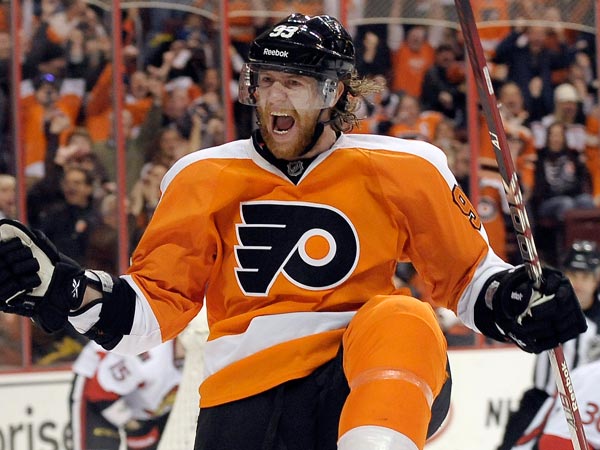Yes. Yes. Yes. The Flyers have been doing good things and I like the good things that they are doing. The most recent good thing they’ve done is re-sign Jake Voracek, who had one year left on his deal, to an eight-year contract extension. Judging from the past two seasons, that deal surmises to be one of the better ones for the Flyers. Broad Street Hockey explains:
In terms of raw contract value, Voracek fits right in with his peers. And they are undoubtedly his peers — as BSH’s Kurt R. detailed earlier this month, Jake’s point per game total of 0.89 over the past three seasons compares favorably to Perry and Kessel, and ranks him eighth among all wingers over the same period, according to Hockey Reference.
Salary cap implications:
For a large-market, deep pocket team like the Philadelphia Flyers, actual monetary spend does not seem to matter. Just ask Ilya Bryzgalov, who will be earning $1.63 million dollars every year until 2027 to not play for Ed Snider’s club. Instead, the yearly cap hit (AAV) of each contract matters most to the Flyers, as each dollar of a player’s cap hit is a dollar that cannot go towards adding new players or retaining other existing ones.
But simply comparing raw cap hits of contracts is too simplistic. For teams that consistently reach the salary cap ceiling, the best way to view a player’s AAV is as a percentage of the salary cap for that season. And while a player’s cap hit is the same in year one and year four of a contract, the percentage of the salary cap ceiling that cap hit represents may be far different.
How is his contract vs. his peers:
Instead of Voracek’s contract landing smack in the middle of his peers, he slides in closer to the bottom. Over the eight-year length of the contract, Voracek would project to take up a little less than 10 percent of his team’s available cap space, assuming our modest cap growth estimate is accurate.
That puts his contract way behind Kane, Perry and Nash’s deals, and measurably behind Parise and Kessel’s contracts as well.
Suddenly, Voracek falls in between the aforementioned Kessel and Bobby Ryan, who received one less year on his recent extension. And for those second-guessing the Voracek extension, that probably makes a bit more sense. After all, Voracek does not have Kessel’s long track record of elite point production, but the Czech winger’s best seasons far exceed those of our illustrious Cherry Hill native.
Does the Voracek contract still come with risk? Of course. It does not kick in until 2016-17, so a serious injury or dramatic drop off in form next season could make this deal look less favorable to the team. Voracek will also be under contract until age 34, and even elite players see a decline in performance as they enter their 30s. There is also always the doomsday possibility of cap ceiling stagnation, either due to economic issues or future work stoppages.
Yup, sign me up. More here.

